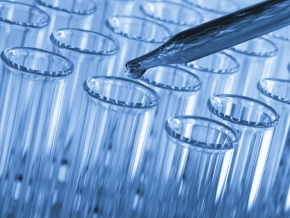Pathways to Breast Cancer

In order to identify potential breast carcinogens—and strategies for prevention—it’s important to first understand the biological mechanisms that cause normal mammary cells to become cancerous. Silent Spring is working to map the series of molecular changes that occur in cells, from the time a person is exposed to a chemical to the formation of a tumor, through various experimental studies and by integrating the latest science on how breast cancer develops.
This type of work is already contributing to the Adverse Outcome Pathways (AOPs) project. The project is part of a broader international effort launched by the Organization for Economic Cooperation and Development (OECD) to learn how chemicals affect human health.
The ultimate goal is to help scientists and regulators evaluate the potential of a chemical to cause breast cancer. Because people are exposed to multiple chemicals from multiple sources on a daily basis, by understanding how chemicals act separately and in combination to influence the development of breast cancer, we can help inform how chemical mixtures are regulated as well.
Studies include:
- Exposing rodents to different kinds of chemicals—ones that cause mammary tumors by damaging DNA and ones that cause mammary tumors by disrupting hormones (endocrine disruptors)—both separately and in combination to simulate real-life exposures.
- Tracking the progression of biological changes that occur in rodent or human mammary cells right after a chemical exposure. Changes include DNA damage, increased proliferation of cells, altered hormone levels, and other biological effects that occur before the formation of a tumor.
- Identifying the patterns of genetic mutations (mutational signatures) and other changes that occur in rodent mammary cells both before and after the formation of a tumor that was induced by a chemical exposure.
- Comparing the mutational signatures caused by different chemical exposures—DNA damaging agent, endocrine disruptor, and the chemicals combined—in order to characterize what processes are altered in the development of mammary tumors.
News & Updates
2024
Silent Spring scientists advance understanding of how endocrine disrupting chemicals influence breast cancer risk.
2020
Findings provide roadmap for regulators to identify harmful chemicals that increase breast cancer risk